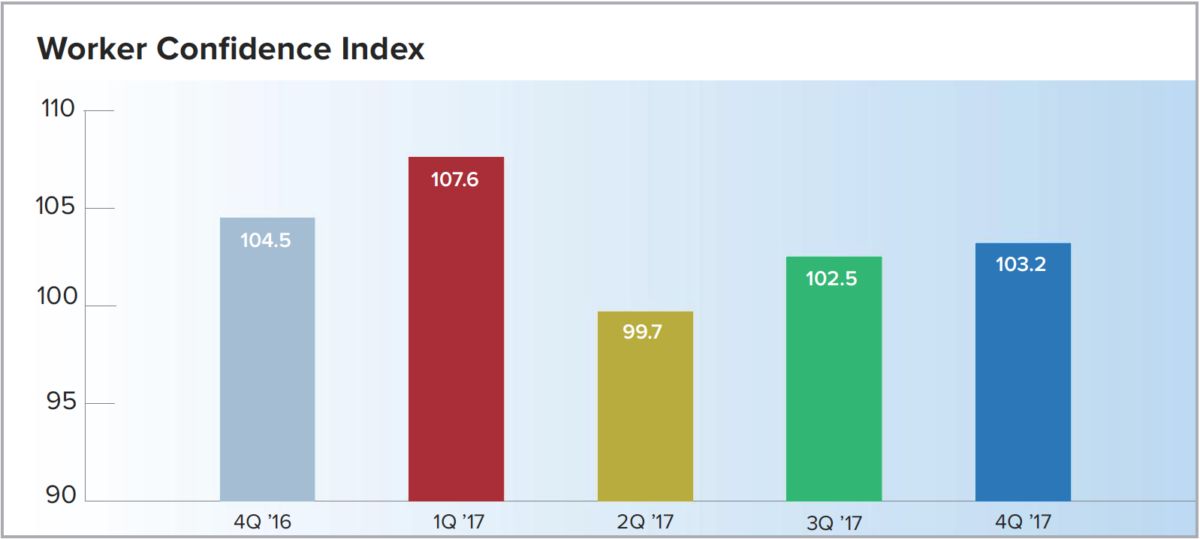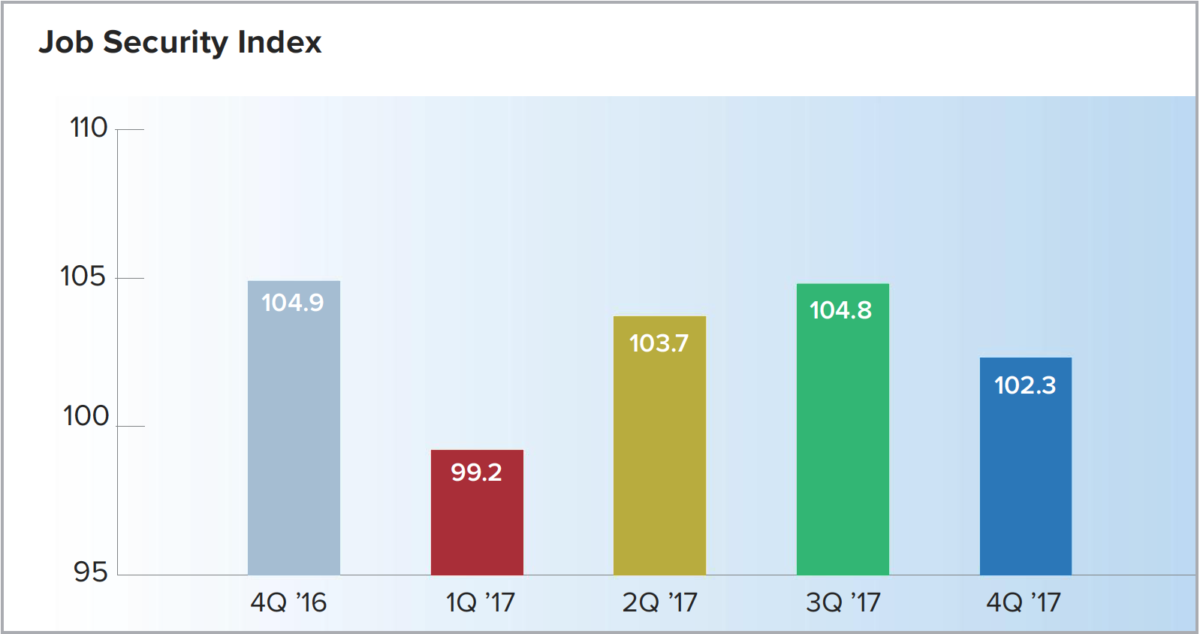Although worker confidence remains high, today’s workforce is concerned about one thing: job security.
By Larry Basinait
The Worker Confidence Index (WCI), which measures employee attitudes about their perceived job security, increased by 0.7 points since the third quarter of 2017 and decreased by 1.3 points since the fourth quarter of 2016. It now stands at 103.2 after increasing for the past two consecutive quarters. Of the four components of the WCI, trust in company leadership rose by 3.2 points in the last quarter while confidence related to job security declined by 2.5 points. The decline in the WCI in the last year reflects employee concerns about the state of today’s workplace; in particular, trust in company leadership experienced a significant drop of 3.6 points since the fourth quarter of 2016. Recent volatility in the stock market may contribute to lower worker confidence in 2018, but for now, confidence remains high overall.
The job security index now stands at 102.3, indicating that workers feel generally secure in their employment. Although this is a decline from both the third quarter of 2017 and the fourth quarter of 2016, it remains above the baseline of 100.0. Concern about job loss is the most important indicator in estimating worker confidence about current and near-term financial outlook.
More females reported concerns over lob loss in the fourth quarter of 2017 than the prior quarter, with a moderate increase of 2.0 percent. However, female concern about job loss increased by only one-half of a percentage point from the fourth quarter of 2016, to 7.9 percent in the fourth quarter of 2017. In contrast, the percentage of males who felt that they would lose their job increased significantly from 11.4 percent in the prior quarter to 15.6 percent in the fourth quarter of 2017, which was 2.9 percentage points higher than the fourth quarter of 2016.
The age segment with the greatest increase in concern about job loss was those aged 55 to 64, with an increase of 5.4 percentage points for the year -double the level reported one year ago. This is a high-income population and job confidence here bears close watching in the next quarter.
Respondents with annual household incomes of over $75,000 indicated that they felt more likely they’d lose their jobs in the fourth quarter of 2017, with 11.4 percent of those making over $100,000 reporting concern over loss of a job. That’s nearly double the rate from the third quarter of 2017 and one and a half times higher than the fourth quarter of 2016.
In the fourth quarter of 2017, respondents indicated increased trust in company leadership, with a 2.8 percent increase in the number of people who trust company leadership from the prior quarter. That change translates to a 3.2-point increase in the Trust in Company Leadership index. The index now stands at 101.9, which partially reverses the decline in trust seen throughout 2017. However, trust in company leadership is still down 3.6 points from the fourth quarter of 2016.
More than one-half of respondents aged 44 or younger report that they trust their company’s leadership, contrasting sharply with those over the age of 45. The inverse relationship between age and trust in a company’s leadership continues to be present.
Click here to read the full results of this quarter’s WCI study.
















